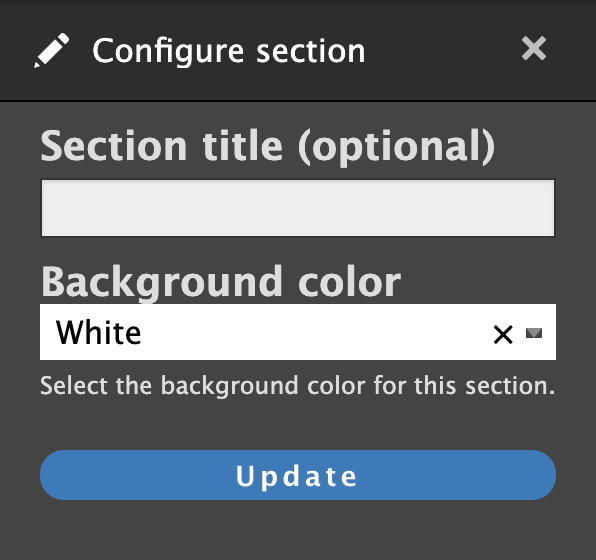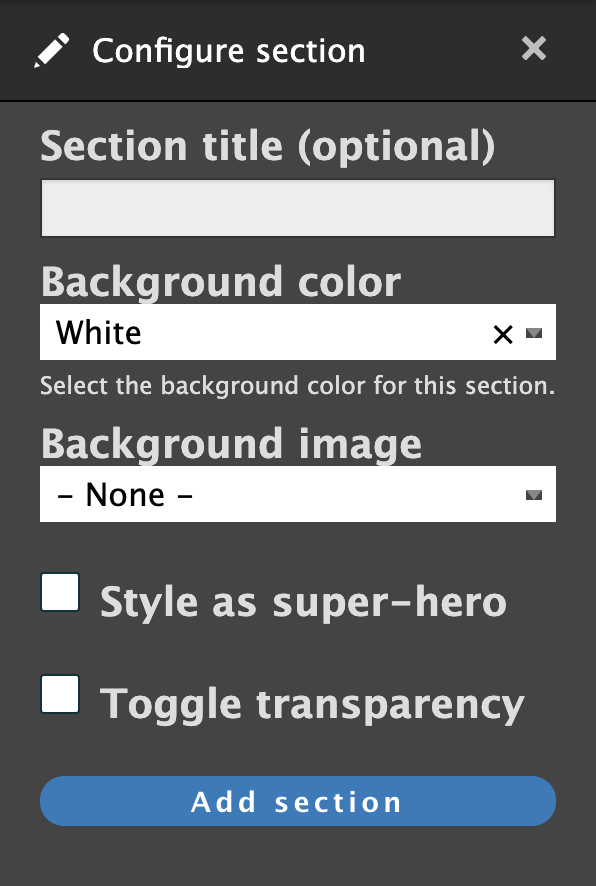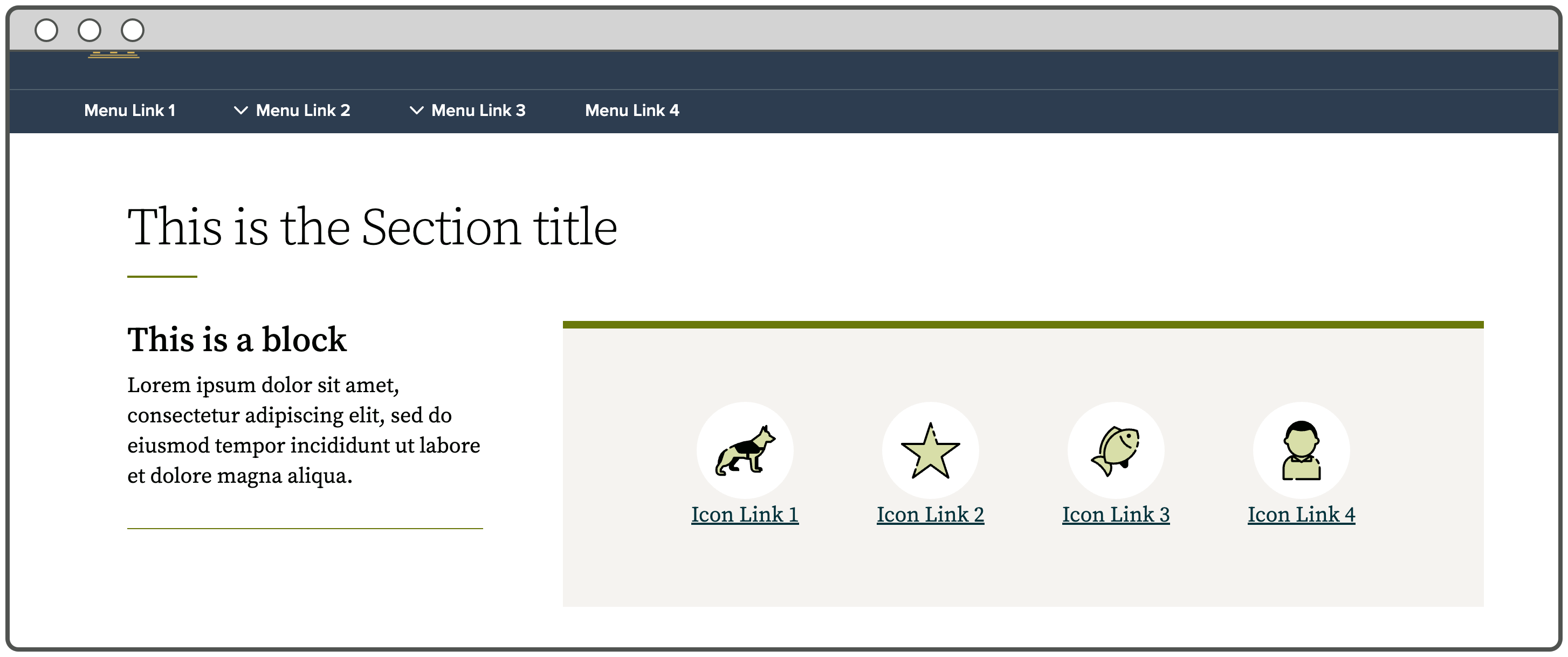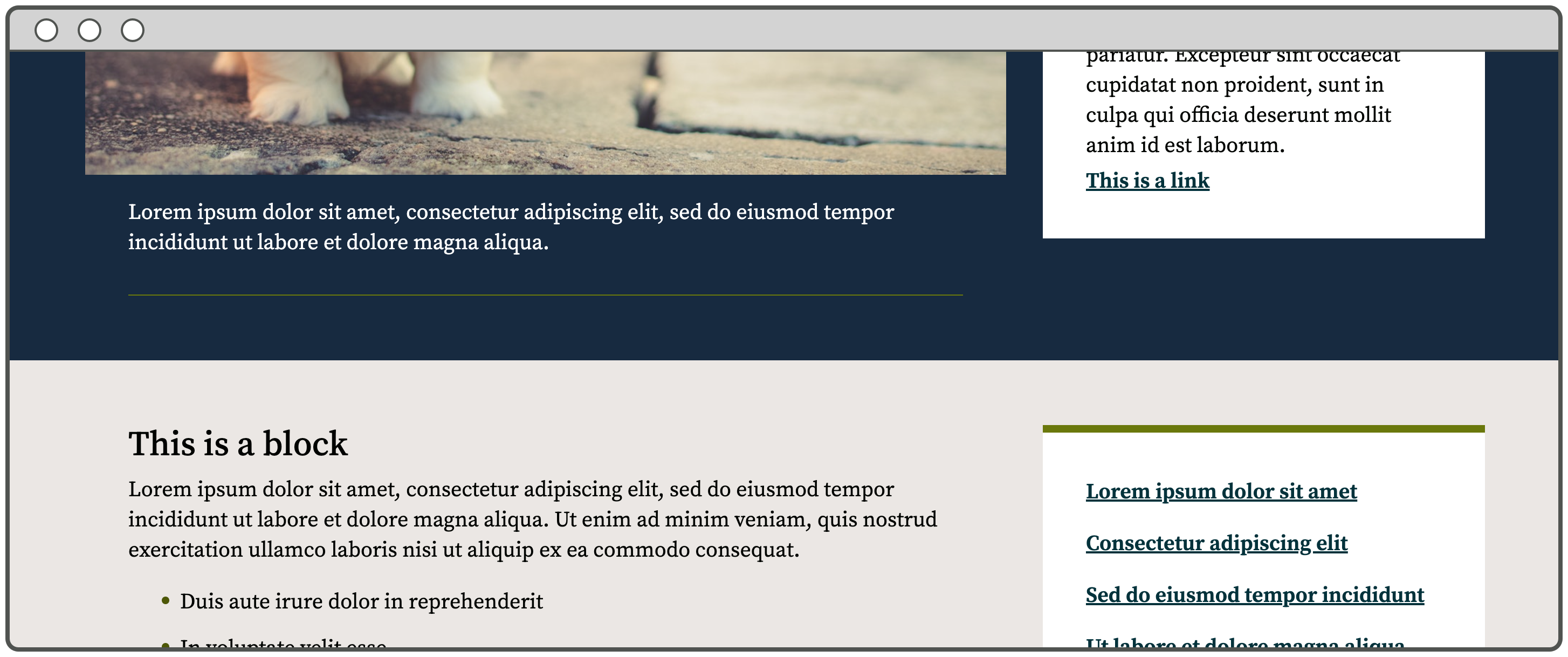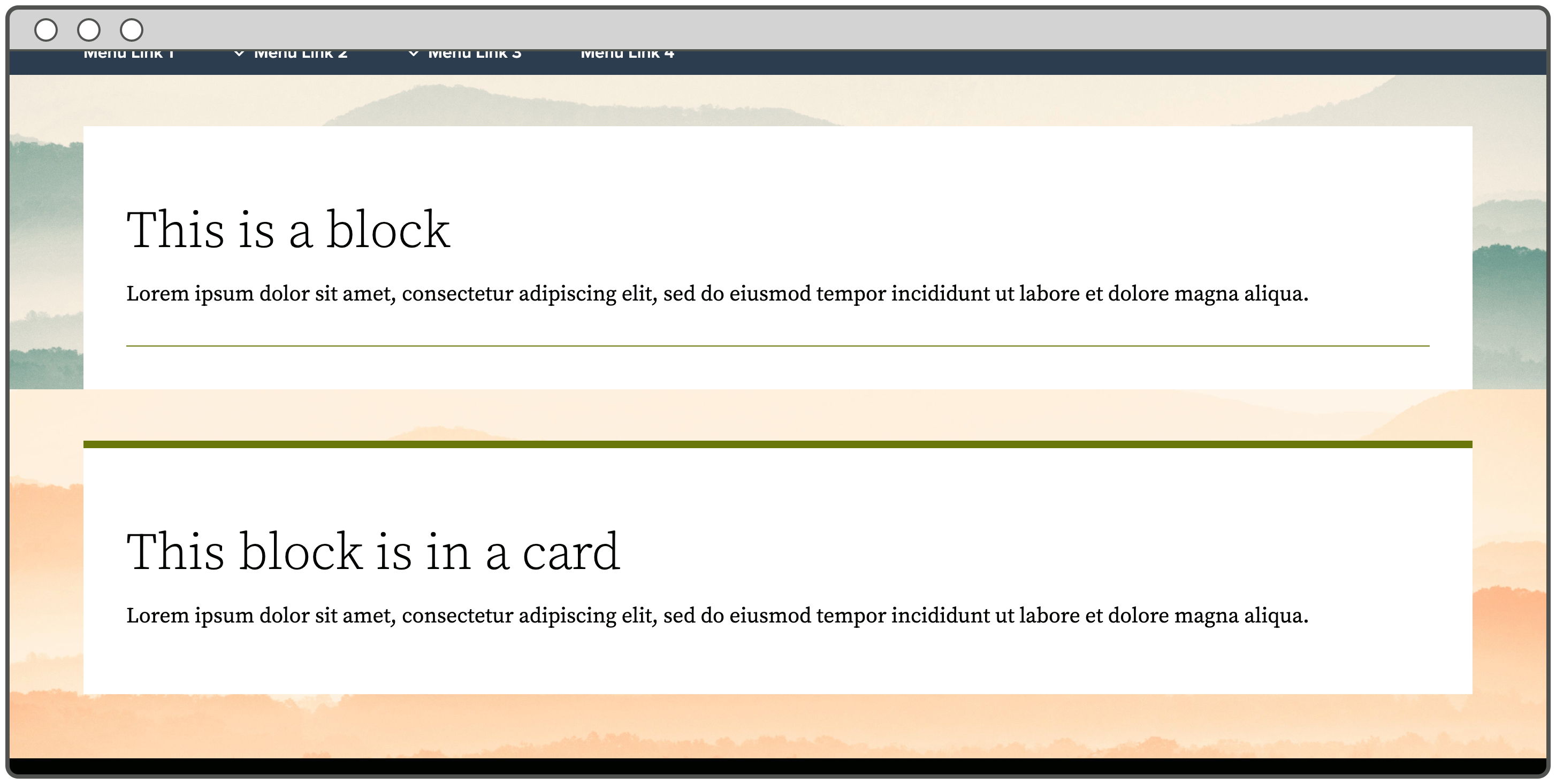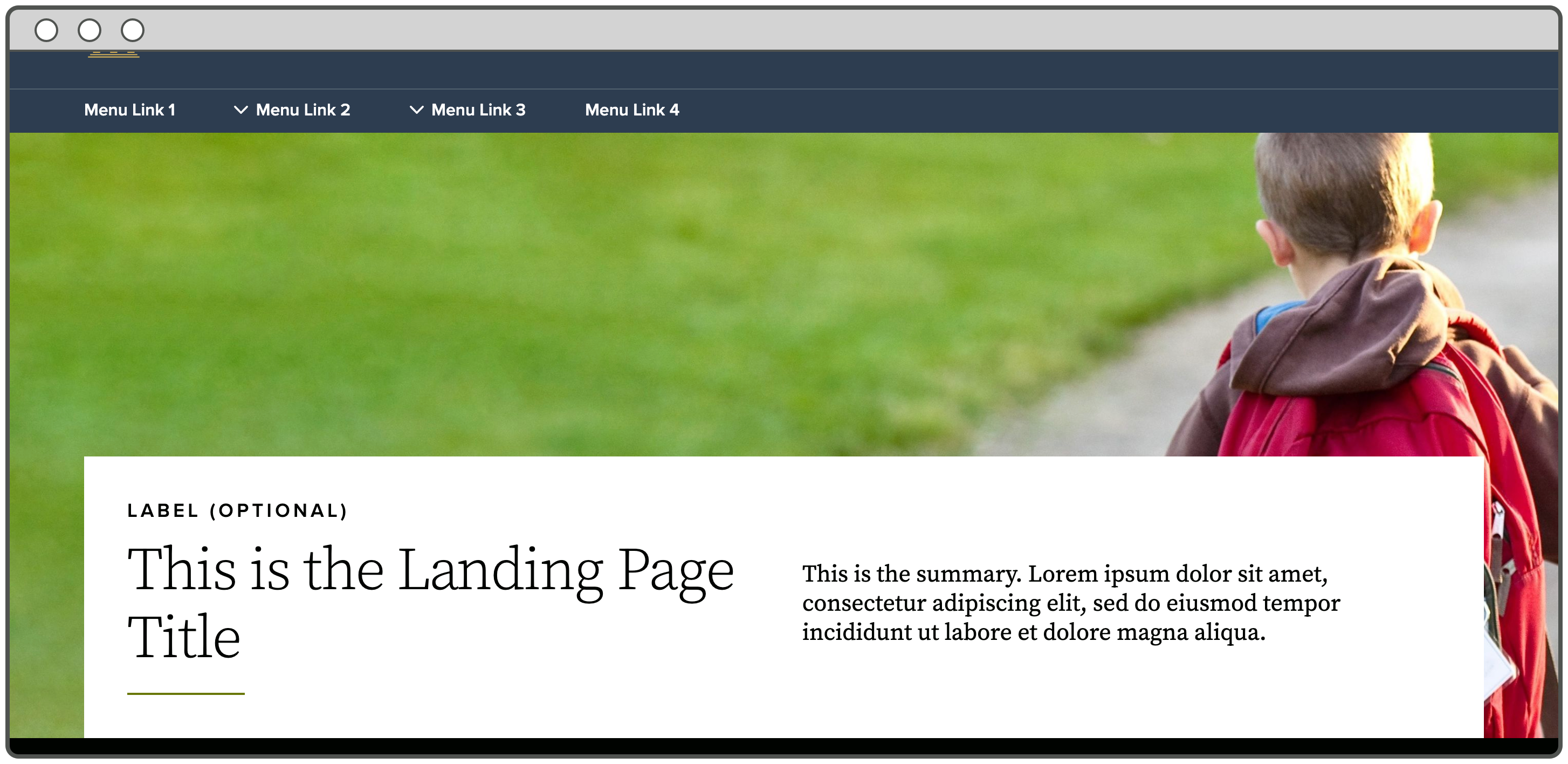After you select the layout for a Landing Page section, you have the option to configure additional settings:
Section title
Background color
If the Section uses the “One column” (full-width) layout, it can also have:
Background image
“Super-hero” styling
Transparency
Section title
You can label the Section’s content with a title. Clear titles will help users navigate efficiently through the page and find the content that applies to their situation.
Background color
The Section’s background color will default to white. When you open the dropdown menu, you’ll see up to 7 color options that are all appropriate for your website’s color palette. Every color palette has both light and dark background options; text on a dark background will automatically display as white to maintain accessible color contrast.
Background image (1 column layout)
By default, all GovHub websites provide the same library of background images. Since much of the background image will typically be covered with other content, these images should be used for mood-setting and decoration rather than content.
“Super-hero” styling (1 column layout)
The super-hero Section style paired with a Section background image lowers content to the bottom half of the section, placing more emphasis on the image.
See super-hero styling at the top of Georgia.gov’s Guide pages, like Assistance Programs.
You can place any type of block in a super-hero Section. That said, we recommend including only text; Avoid placing images or icons on top of the background image. One great option is the “Landing Page Header” block, which will display the page’s Label, Title, and Summary (set on the Edit screen) in a two-column display.
“Super-hero” background images
Since the super-hero styling displays more of the background image than the regular display, it’s important to select an image that appropriately represents the paired content. If none of the default background images are appropriate for your content, please open a support request to discuss additional options.
Transparency (1 column layout)
...
Use Landing Pages for high-level, main pages and large sections of content that needs careful, editorially controlled structure.
Functionally, a Landing Page allows additional functionalities that may not be available with other content types (such as Topic Pages) in GovHub.
For example, with a Landing Page you can:
Drag and drop content as opposed to working solely within the parameters of a text editor box.
Access full-width of a page (optionally, as opposed to defined space reserved for the side navigation)
Select from more defined sections (as opposed to a more fluid layout)
Important Note: Don't use a Landing Page for low-level, detail pages or content that should use a specific, pre-structured content type (such as Event, News, How Do I, etc.).
Landing Page Best Practices
Landing Pages are not intended to house content, but rather to easily connect users to related content, acting as the starting point for sections of information. Consider Landing Pages a “hub” of related content.
Landing Pages work well as the starting point for sections of information. They are typically high in the site navigation, have only short blurbs of text, and lots of links. Landing Pages give you control over the layout with stackable sections.
When developing a Landing Page, use common language that is clear, concise and action-oriented.
Limit your buttons.
Allow for whitespace.
Do not include:
Anything that will take much more than a quick glance to comprehend, for instance:
Large blocks of text
Videos
Social media feeds (exception for elected officials)
Anything someone wouldn’t understand if this is the first page they see on your site:
Insider jargon
Detailed explanations or information
